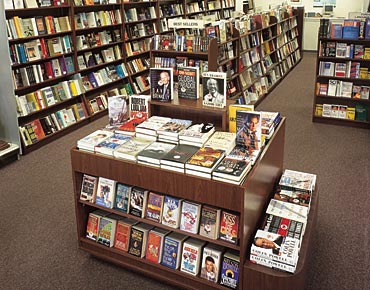
There’s a lot to despair, it would seem, for people in the newspaper industry. Classifieds, obituaries, the reporting of news itself, all once solidly in the newspaper publisher’s wheelhouse, have gone digital. Articles about the death of newspapers are far from new or original anymore, and from the perspective of newspaper reporters and contributors the fears expressed in those articles are well warranted. Investors have been pulling money out of newspapers for years, and even though the industry is stabilizing as newspapers make new revenue putting their digital content behind paywalls and the like, the print format of those papers is slowly going under, at least according to conventional wisdom. And of course it is. As a news media consumer, I now have two options for purchasing a subscription to a local or national paper. I can do it the old-fashioned way, wait for a truck to cruise by my house at five in the morning and wake me up by slapping a paper against my front door, walk out to get that paper at six to read a small portion of it before either taking it with me on the train or leaving it behind and driving to work, or I can just have the same paper delivered to my inbox every morning at the same time and read it whenever I get to my desk in the morning, minimizing the tab with my news on it when another task comes up. Put that way there’s really no contest.
But print as a media format isn’t limited to news. And outside of the news world, it’s still thriving. Even digital companies are pushing print and more traditional media distribution centers today. Amazon just opened its first brick and mortar store (follow the link to see what the store looks like inside) in Seattle. The store carries thousands of print books sold at the same prices as on the website. This follows a trend Amazon has been on for a while of incorporating print into its media empire rather than trying to extinguish it. Authors who publish their novels or nonfiction books as ebooks on the website have for years had on-demand print options available to them and their customers through Amazon. Now those authors have a shot at getting their books in Amazon stores (hopefully without having to sacrifice royalties to do so).
And it was very prescient of Amazon to recognize the strength of print media and incorporate it into their brand. Print is still a place to put your money if you’re the kind of person to invest in these things. Between 2009 and 2014, despite the Great Recession’s drag on the economy, the number of small, independent book stores in the states has jumped at least twenty percent. This, too, could be because of companies like Amazon; the idea of independent book stores thriving as a counter to giant retailers in the same way craft breweries exploded as a counter to domestic super-brewers is not at all implausible.

But other reasons could be behind the continued survival and growth of print. Maryanne Wolf suggests that the distraction-free nature of print media in a modern world full of nothing but distractions can’t be underestimated. “The basic message of working on screen is you are on call,” Wolf says of digital media. “It’s not that you can’t do deep reading on a screen, we’re talking about the ease of how you get into it. The emphases are different. Amid all the interruptions on a screen, we are actually diminishing the amount of words we really take in when we read.”
It may not be easy to prove the reason why, but the fact is print continues to do well, somehow. In addition to Amazon’s investment, there are examples of public support for print books even through Kickstarter campaigns like this one. This is as true in business it seems as with literature. Ironically, the prevalence of digital design tools and formats seems to be contributing to a four billion dollar growth of the inkjet market in four years. The ability to print technology onto things like paper and textiles seems to be contributing as well.
This of course could be an overly optimistic assessment. There are hundreds of articles to refute the hundreds of articles out there arguing that print is surviving and even thriving well into the digital age. But in many ways the fates of digital and print media seem inexorably linked; digital formats exist increasingly not only as independent media of their own but as a way to make something look and feel as pretty as possible on a piece of paper. Access to literature and news in both formats has never been easier for humanity in general, and maybe print is simply being propped up by overflow consumers in an age of digital enlightenment. But my hunch is it’s managed to market itself as a real alternative, and until a Kindle can feel as good in the hand as a book, print will be around for a while.
[…] Source: No, Print Isn’t Dead. It’s Even Growing. […]
LikeLike